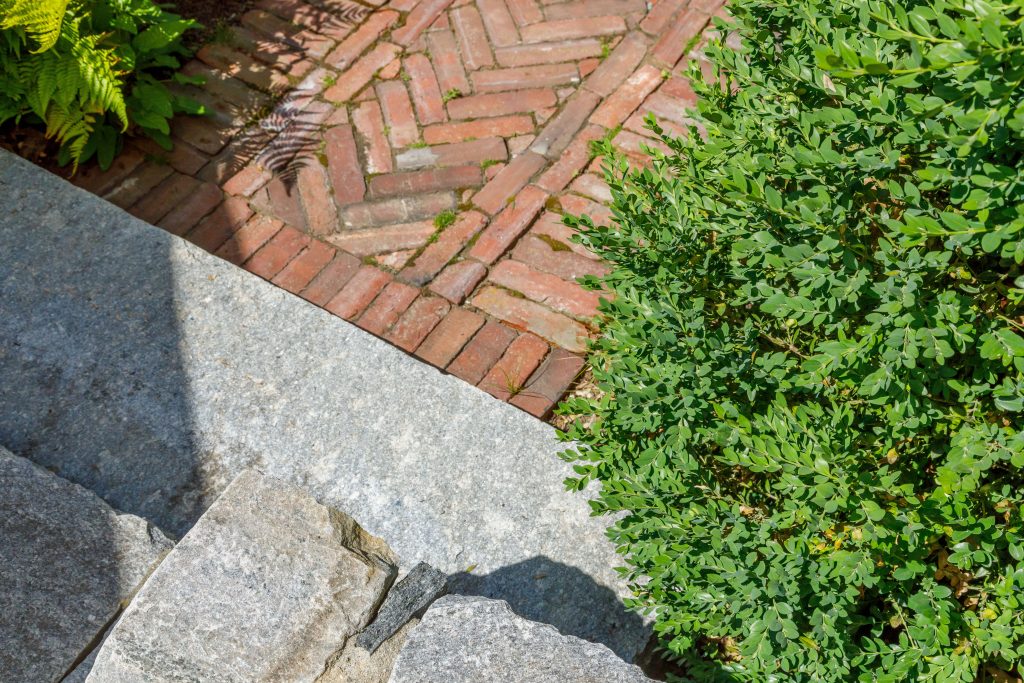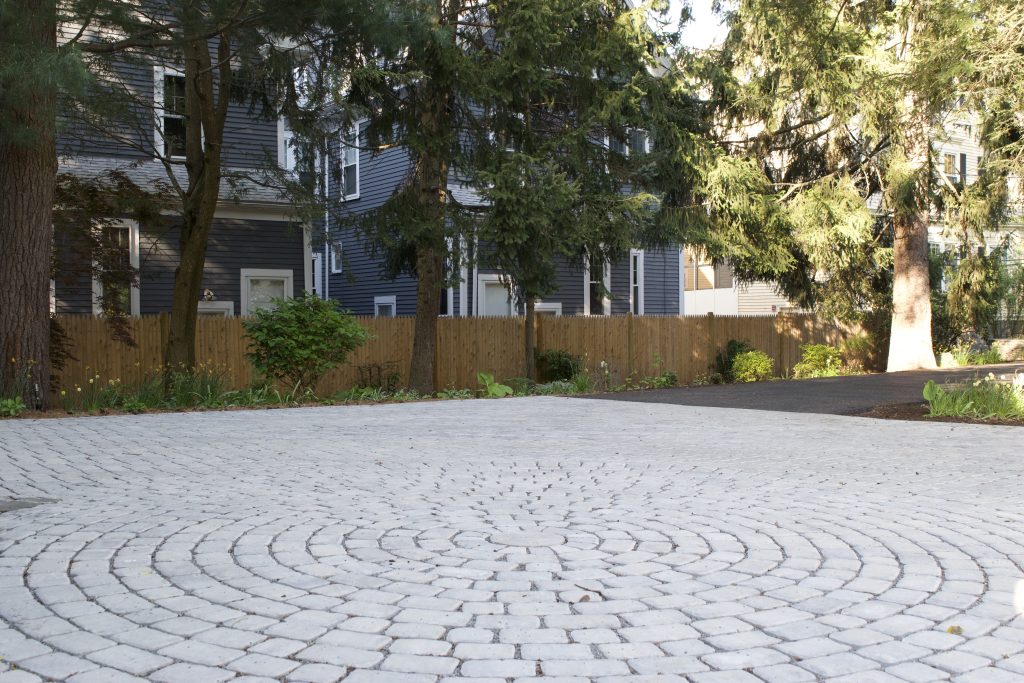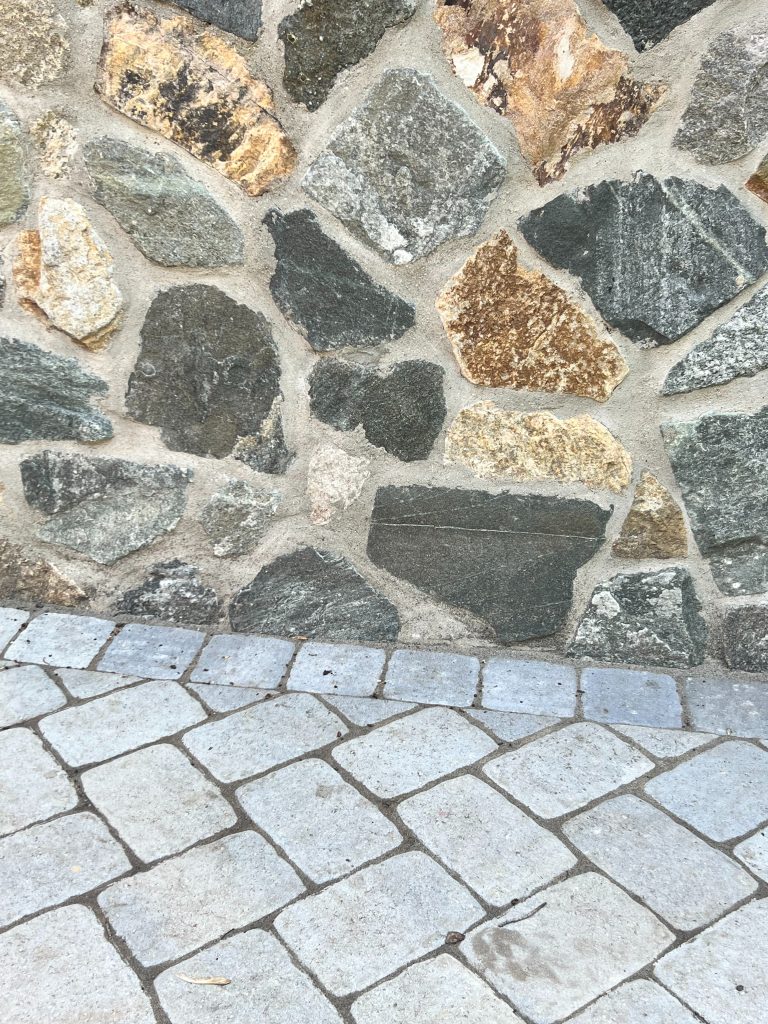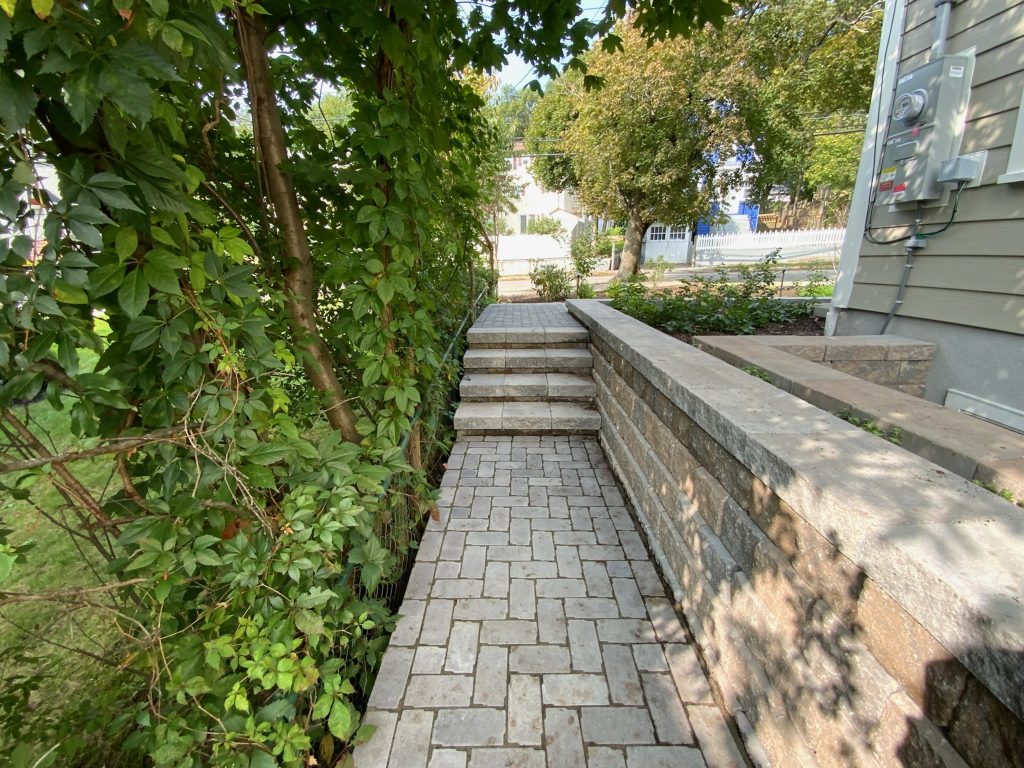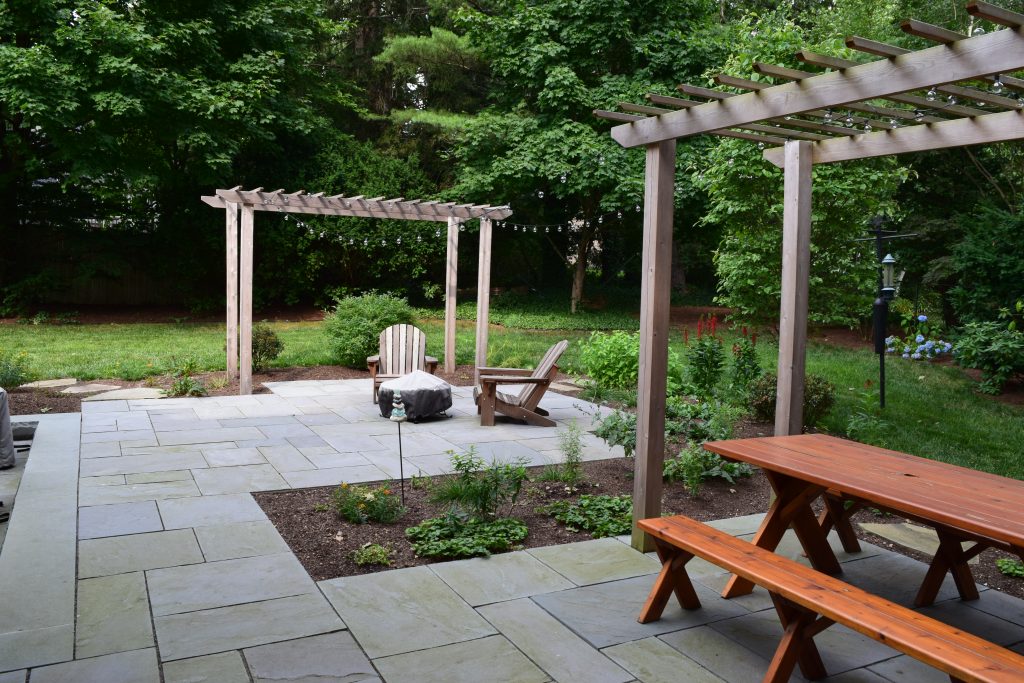Permeable Pavers for Sustainable Landscaping
Permeable pavers offer both style and environmental benefits. These concrete paving stones, designed with small gaps, allow water to penetrate the surface, significantly reducing runoff and protecting groundwater from pollutants. Installed over gravel, permeable pavers effectively treat stormwater before it re-enters the aquifer, making your landscape more resilient and eco-friendly.
Natural Stone Patios and Paths
Natural stone like bluestone, granite, and fieldstone provides enduring beauty and visual interest year-round. Bluestone, prized for its elegant blue-gray hues, brings sophistication to patios and walkways, blending beautifully with brick and other stone materials. Granite, known for its unmatched durability and variety of colors, adds luxury to retaining walls, steps, benches, and decorative boulders.
Fieldstone evokes a classic New England aesthetic, ideal for informal paths and walls. Large pieces create inviting, rustic pathways, enhancing natural garden settings. For a timeless, historical charm, cobblestones—often reclaimed from historic buildings—are perfect for informal driveways or cottage-style gardens.
[ Above Photo: Design by Christie Dustman & Co, Photo by Lynn Damianos ]
Retaining Walls and Segmental Concrete Wall Stone
Retaining walls are practical and visually striking landscape elements, essential for managing slopes and creating functional terraces. Segmental concrete wall stones, made to mimic natural stone, are versatile, durable, and available in various colors and sizes. These walls not only stabilize the soil but also add character and structure to gardens, walkways, and patios.
Outdoor Living with Fire Features
Enhance your outdoor living spaces with fire features like fire pits or outdoor fireplaces. These elements create inviting gathering spots, allowing enjoyment of outdoor spaces even during cooler weather. Pair these features with permeable pavers or natural stone patios for a cohesive, comfortable outdoor living environment.
Functional and Beautiful Hardscaping Options
For driveways, pathways, and patios, interlocking concrete pavers offer durability and a wide range of aesthetic possibilities, resembling materials like stone, brick, or wood. Clay bricks deliver a warm, traditional look, suitable for pathways, patios, and driveways. Peastone, meanwhile, provides informal charm and excellent permeability, ideal for garden paths or decorative accents.
Stone dust, or decomposed granite, serves as a cost-effective patio or path surface, particularly when polymeric binders are added to enhance durability and ensure ADA compliance.
By thoughtfully choosing materials like sustainable hardscaping options, permeable pavers, and natural stones, you can create outdoor spaces that are beautiful, functional, environmentally responsible, and perfectly suited to your lifestyle.

